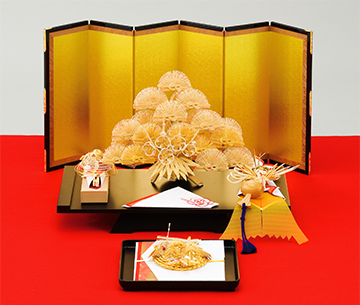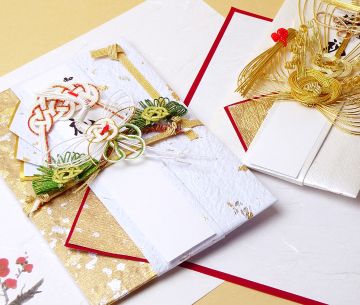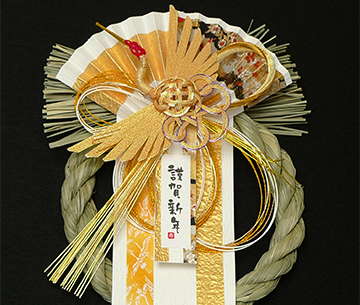Shinmeido Mizuhiki

The History of Mizuhiki
Mizuhiki’s origins trace back to the Asuka Period (710-784) when Ono no Imoko, a Japanese envoy to the Zui Dynasty China, adorned a gift with red and white-dyed hemp twine. This act symbolized a prayer for his safe return to Japan.
In the Muromachi Period (1336-1573), during the trade between Japan and the Ming Dynasty, trade goods were identified by tying white and red ropes. This practice served as a method to distinguish between exports and imports. The people of that era in Japan are said to have observed this and incorporated the tradition of presenting gifts adorned with red and white cords into their culture. Various theories surround the origin of the term, including one suggesting that twisted paper was solidified by drying with glue water to prevent unraveling, and another proposing that twisted paper was dyed by immersing it in colored water while being pulled.


Yuino
A yuino betrothal gift is presented in a traditional ceremony, a practice passed down through generations as a pivotal step in uniting two families and strengthening their bond. While the presentation of gifts may vary based on regional and cultural customs, each gift carries its own auspicious significance and is imbued with sincerity, aiming to bring joy and happiness to the couple.

Kinpu celebratory envelopes
A distinctive envelope crafted from Japanese paper, adorned with Mizuhiki and Noshi, is employed for monetary gifts and is referred to as a “kinpu” or “noshi-bukuro.”
At the different turning points in life, we hold dear the uniquely beautiful Japanese tradition of conveying congratulations and condolences. Recently, with a wealth of Mizuhiki varieties, numerous Kinpu envelope products with thoughtful designs have been crafted.”

New Year’s decorations
At the dawning of a new year, individuals adorn various spaces with New Year’s decorations to welcome and celebrate the deity of the year.
Different regions utilize various shapes and embellishments, each carrying auspicious meanings, to celebrate the New Year with decorative elements.




